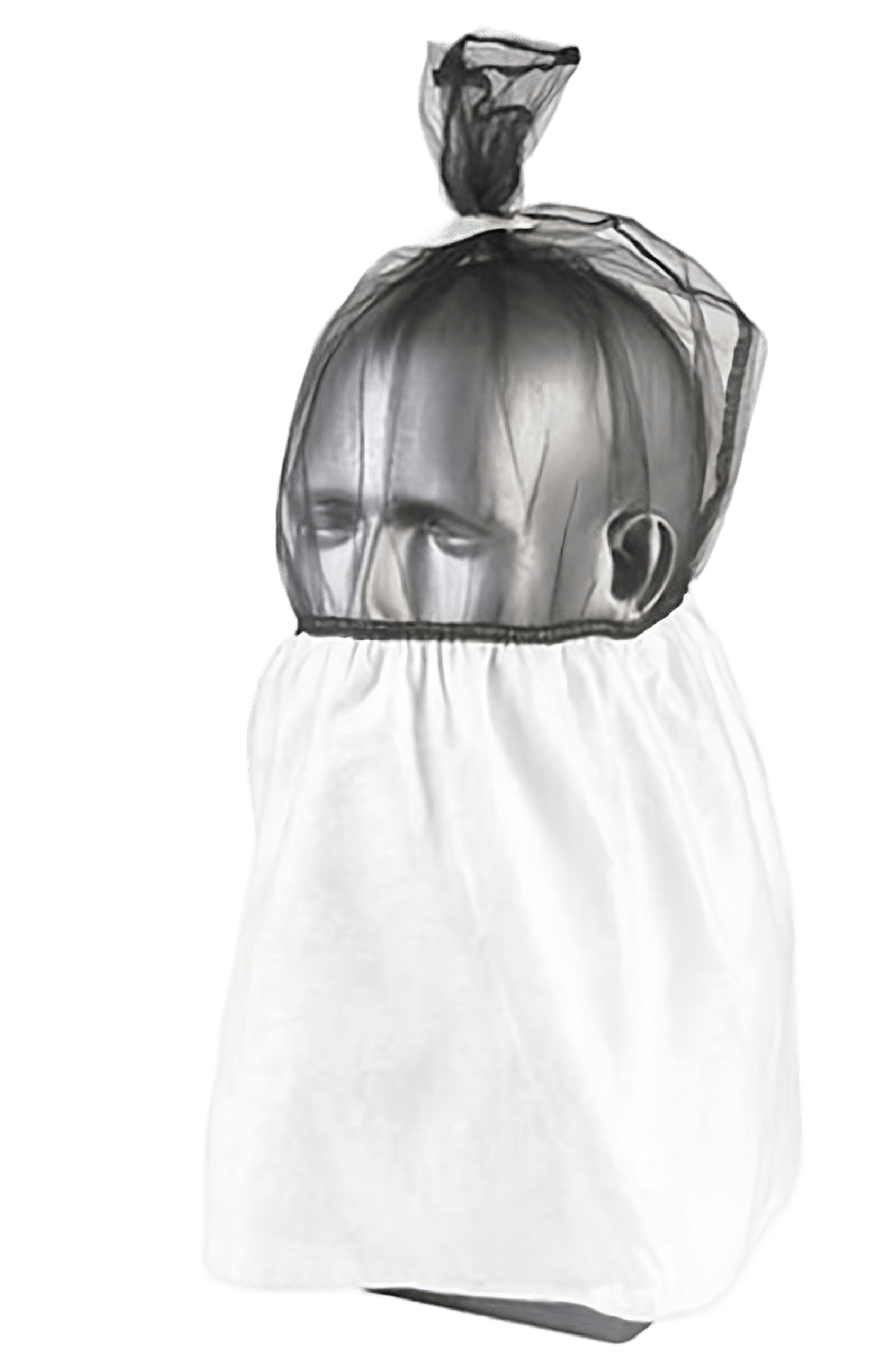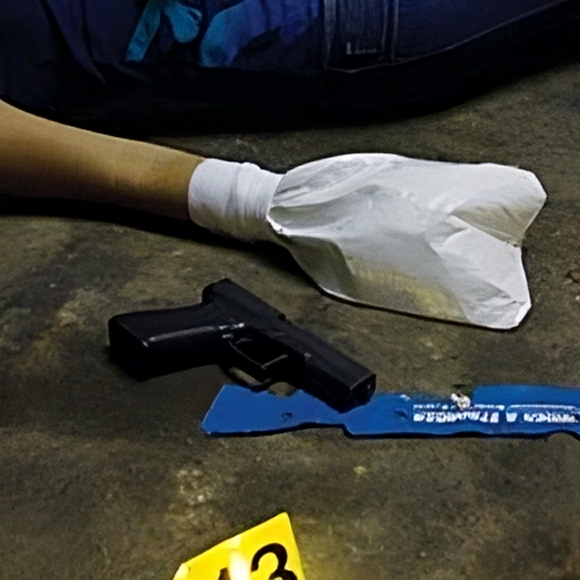Be Prepared...
Spit Happens!
The Tranzport Hood™ is a medical-grade spit hood designed for law enforcement. It controls and stops contaminants, making biting ineffective.
“…the Tranzport Hood was the only SRD that stopped liquid penetration.”*
The Tranzport Hood™ is a medical-grade spit hood designed for law enforcement. It controls and stops contaminants, making biting ineffective.
“…the Tranzport Hood was the only SRD that stopped liquid penetration.”*
Detainees who spit or bite are unpleasant to deal with and can be hazardous to the health of your personnel. The TranZport Hood™ is a spit hood, featuring a medical-grade fabric skirt which helps to control and stop contaminants and makes attempts at biting ineffective. A secure-lock tab and elastic neck-band allow for convenient application and prevents self-removal of the spit hood, without limiting the individuals range of vision.
TranZport Hoods come individually packaged with instructions.
**Read all instructions carefully before use.**




A joint effort by The Institute for the Prevention of In Custody Deaths and Americans for Effective Law Enforcement, Inc.
As the safety and security of police officers continue to be a top priority, law enforcement agencies are constantly exploring new tools and techniques to mitigate risks. One such tool gaining attention is the use of spit hoods. Designed to protect officers from potential harm during confrontations with individuals who may spit or bite, spit hoods have become increasingly prevalent in policing.
Spit hoods, also known as spit guards or spit masks, are mesh-like devices that are placed over an individual’s head to prevent them from spitting, biting, or throwing fluids at officers. These hoods provide a physical barrier, reducing the risk of exposure to bodily fluids and potential transmission of diseases such as hepatitis or HIV, and many law enforcement agencies argue that their use is essential for officer safety. Supporters assert that spit hoods are a necessary tool that can prevent officers from being exposed to harmful substances or contracting potentially life-threatening diseases.
The use of spit hoods is often seen as a last resort in situations where an individual’s behavior poses a direct threat to the safety of officers or others. Law enforcement agencies recognize that the use of spit hoods should be proportionate and reasonable, ensuring that their deployment is justified in each specific circumstance. Proper training and clear guidelines are crucial to ensuring the appropriate and responsible use of spit hoods in policing.
While the primary purpose of spit hoods is to protect officers, it is essential to consider their potential impact on the person being restrained. Critics argue that spit hoods can be dehumanizing and may infringe upon an individual’s rights or dignity. Striking a balance between officer safety and the preservation of human rights is a challenge that law enforcement agencies must navigate when considering the use of spit hoods. Of utmost importance is the use of proper spit protection that allows proper breathing, ventilation and sight while eliminating the need for more restricting and confining measures.
Despite their perceived benefits, spit hoods have also faced criticisms and controversies. To address these concerns, law enforcement agencies must establish clear guidelines and training protocols to ensure the responsible and ethical use of spit hoods. Proper training should include recognizing situations where the use of spit hoods is necessary, as well as techniques for applying and monitoring them to minimize any discomfort or distress experienced by the person being restrained.
Transparency and accountability are crucial in maintaining public trust and confidence in law enforcement. Agencies should regularly review and evaluate their use of spit hoods, considering feedback from the community and civil rights organizations. This ongoing dialogue can help address concerns, refine protocols, and ensure that the use of spit hoods aligns with ethical standards and respect for human rights.
To ensure the responsible and effective use of spit hoods, law enforcement agencies should adhere to best practices and guidelines. These guidelines should include the following:
By adhering to these best practices and guidelines, law enforcement agencies can strike a balance between officer safety and the preservation of human rights, promoting public trust and confidence in their operations.
Excerpt from “The controversial Use of Spit Masks by Law Enforcement-Part ll”
John G. Peters,Jr., CLS,Ph.D. and A. David Berman, CLS, M.S.
Police and Security News Sept/Oct 2021
Spit masks are another defensive tool which can be applied on individuals to help restrain them from spitting while increasing your safety. Regardless of the spit mask brand or design authorized by your agency, you need to be trained in its application, removal and disposal, and then competency-based tested to show you learned the information and demonstrated the necessary skills to apply and remove it. Hands on application will help you to not only develop your application skills, but also show what it is like to wear a spit mask. Spit mask training is considered career and technical education. Competency-based training helps to minimize municipal and officer liability and is a great risk management tool. Like a spit mask being used for prophylactic purposes, preincident training also helps protect the officer and his (or her) employer should an injury or arrest-related or in-custody incident occur which is associated with spit mask application. Remember: It is never a problem until it is a problem and then it is usually too late. Proactively training officers on the appropriate uses of a spit mask will not take a lot of time. If your agency does not have a spit mask training program, consider the ON-DEMAND and tuition-free Spit Restraint™ User-Level program which takes approximately one hour to complete, including assessment (ipicdtc.com). Proof and validation of training are critically important when facing litigation. Spit mask trainers must have a written lesson plan (not a topical outline) which details what is taught and testing rubrics which quantitatively show how learning and physical skills (e.g., application and removal) are demonstrated and measured. Teaching officers that spit mask applications are a use of force is also a good time to discuss a few of the high profile spit-mask associated arrest-related and in-custody deaths. It is also a good time to remind officers that they must explain in detail what induced the need for applying a spit mask.
Tranzport Hoods come individually packaged with instructions. The following are the instructions that are included in each package:
The Tranzport Hood is a temporary protective hood for use on those persons where a risk of exposure to infectious disease is present. If used properly, the Tranzport Hood can reduce the risk of the wearer transmitting fluids (saliva and mucous) from the facial area, as by spitting, sneezing, or coughing. Improper use may result in serious injury or death due to asphyxiation, suffocation or drowning in one’s own fluids.
The Tranzport Hood is designed to be used on a single person, and should never be reused. Remove when destination is reached or the prisoner is to be left unattended, or as advised by a superior and safely discard.


HandBagz™ were developed to protect the integrity of evidence that may be present on the hands of persons associated with a crime. Up till now, technicians have utilized paper bags secured with evidence tape or rubber bands to cover the hands of assault victims, suspects or corpses. Paper bags are easily torn or can fall apart when exposed to inclement weather or condensation and/or body fluids from corpses while in storage lockers at the local morgue. CSis and SANE professionals can use this one-size-fits-all product to protect trace, DNA and GSR evidence that may be present on the hands of suspects or victims. Coroners and Medical Examiners can use HandBagz on the hands of the deceased to preserve evidence and prevent contamination.
HandBagz are constructed from bio-medical absorbent materials. The bags have a plastic film outer barrier to prevent the absorption of outside liquids and the leaking of liquids from the inside. Each bag has a stretch wrap to make securing the bag to the arm a one-man operation. The outside of the bag can be marked with a permanent marker to designate hand, evidence and case information.
Bags measure: 7.5” x 13” with a 13” stretchable fabric securing strap.
HandBagz are sold in pairs.
*Verified by Institute for the Prevention of In-Custody Deaths, Inc.
*Published by Americans for Effective Law Enforcement, Inc. in the AELE Public Safety Journal.